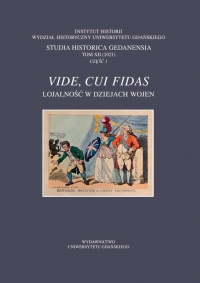„Nam strzelać nie kazano…”? Siły Zbrojne Ukrainy na Krymie w obliczu rosyjskiej operacji hybrydowej w lutym i marcu 2014 r. Przebieg i uwarunkowania kryzysu lojalności
„We were not allowed to shoot…”? The Ukrainian Armed Forces in Crimea in the face of the Russian hybrid operation in February and March 2014. The course and conditions of the loyalty crisis
Author(s): Grzegorz SkrukwaSubject(s): Politics / Political Sciences, Politics, History, Military history, Peace and Conflict Studies
Published by: Wydawnictwo Uniwersytetu Jagiellońskiego
Keywords: Ukraine; Armed Forces of Ukraine; Crimea; annexation; hybrid war; disloyalty; treason; defection; morale; Russia
Summary/Abstract: Russia’s annexation of Crimea was carried out as a result of a hybrid operation, combining elements of external aggression and internal rebellion, which was taking place between February 20 and March 26, 2014. The article examines the course and conditions of loyalty crisis in the units of the Armed Forces of Ukraine stationed when in Crimea. The Ukrainian troops did not put up active military reaction to the aggression, although there were many moving acts of moral and symbolic resistance. After the annexation, 70.01% of the military personnel turned over to the occupant or left the service, and only 29.99% remained faithful to Ukraine. The failure of the Armed Forces of Ukraine in Crimea to perform its constitutional duty to defend the territorial integrity and sovereignty of the state was primarily due to the fact that most of the personnel were mentally unprepared for a confrontation with Russia. Most of the soldiers were Crimean locals and shared the pro‑Russian political and cultural orientation of the majority of the Autonomous Republic of Crimea’s population. At the time of the presidency of Viktor Yanukovych in 2010–2014, the Ukrainian defence sector was dismantled and exposed to Russian influence. In February and March 2014, Russia used a whole spectrum of pressure measures against Ukrainian officers: from friendly persuasion, through demonstration of technological and organizational superiority of Russian forces, to the bribes and intimidation. The post‑Maidan Ukrainian authorities realized that most of the Ukrainian soldiers in Crimea were demoralized, and the climate in the Navy Command was almost „treacherous”. Most likely because of what was mentioned above, but also considering the general international situation, the order to defend Crimea was not being issued. The Ukrainian soldiers in Crimea were simply to follow by a „hold on” directive.
Journal: Studia Historica Gedanensia
- Issue Year: 1/2021
- Issue No: 12
- Page Range: 474-492
- Page Count: 19
- Language: Polish

